Working smarter with data: Can recommender systems help find business partners?

In the second-last day of @AuManufacturing‘s ‘Working smarter with data’ editorial series, Qian Zhang and Jie Lu explain recommender systems and their usefulness to small and medium businesses.
E-government has become a global phenomenon with governments across the world using AI and information technology to enhance management and service processes. In the United Nations E-government survey 2020, Australia was ranked fifth place in “the scope and quality of online services, status of telecommunication infrastructure and existing human capacity”. The COVID-19 pandemic has again prompted the urgency of developing e-government to conveniently deliver e-services for both citizens and businesses.
Searching for and selecting qualified business partners is one of the most vital services offered by e-government to SMEs and is a core task. For example, The Australian Trade and Investment Commission (Austrade, www.austrade.gov.au) supports Australian export companies in buyer/partner identification and selection by searching overseas markets for relevant buyers/partners. However, due to its simplicity, low recall and imprecision, keyword query is not efficient and cannot satisfy the personalised needs of businesses. Meanwhile, as the amount of information available on the web is overwhelming, searching for qualified business partners requires excessive amounts of time and effort, which sometimes turns out to be too costly, unreliable and risky. Recommender systems, as an effective method for the implementation of e-service personalisation, are required to assist SMEs to find business partners.
A recommender system aims to recommend the most suitable items (products or services) to a particular user (individual or business) by predicting the user’s interest in an item based on user historical records. Recommender systems, as one of the hottest areas in artificial intelligence, have brought great profits to companies who are prompting frontier development with more sophisticated techniques to support consumers. Recommender systems can help provide personalised services, improve user profile, retain the loyalty of users, increase revenue and understand market trends.
To meet various and complex requirements for the SME, a recommender system called SmartBizSeeker has been developed to generate recommendations to find business partners. This system is developed by the team led by Distinguished Professor Jie Lu from Australian Artificial Intelligence Institute, University of Technology Sydney. In this system, products are represented as taxonomy trees and the tree similarity measure-based recommendation methods to represent the tree-structured products and to calculate similarities between them.
In the SmartBizSeeker, the “items” can be either potential supplier partners who supply products or potential buyer partners with specific buying requests; the “users” are businesses searching for partners. For example, business A needs to find product material providers; business B may supply related materials, and business C may have interests in purchasing A’s products. Now, the SmartBizSeeker aims to assist business A to find B and then C to find A among the many potential business candidates.
As a web-based online system, the SmartBizSeeker recommender system has a standard multi-tier architecture, which includes a web browser, a web server and a database server as shown in Fig. 1. The web browser is the user interface for users to actively access the system. When a user visits the website of SmartBizSeeker, the browser sends requests to the web server every time the user performs an action such as logging in or visiting a new page. When the server receives the requests, it retrieves the requested resources and sends them back to the browser. The website and application are hosted in the web server, which provides business partner recommendation services and other relevant services. The SmartBizSeeker system can be divided into three layers: the presentation layer, the business logic layer and the data access layer. The databases of the system are maintained in the database server.
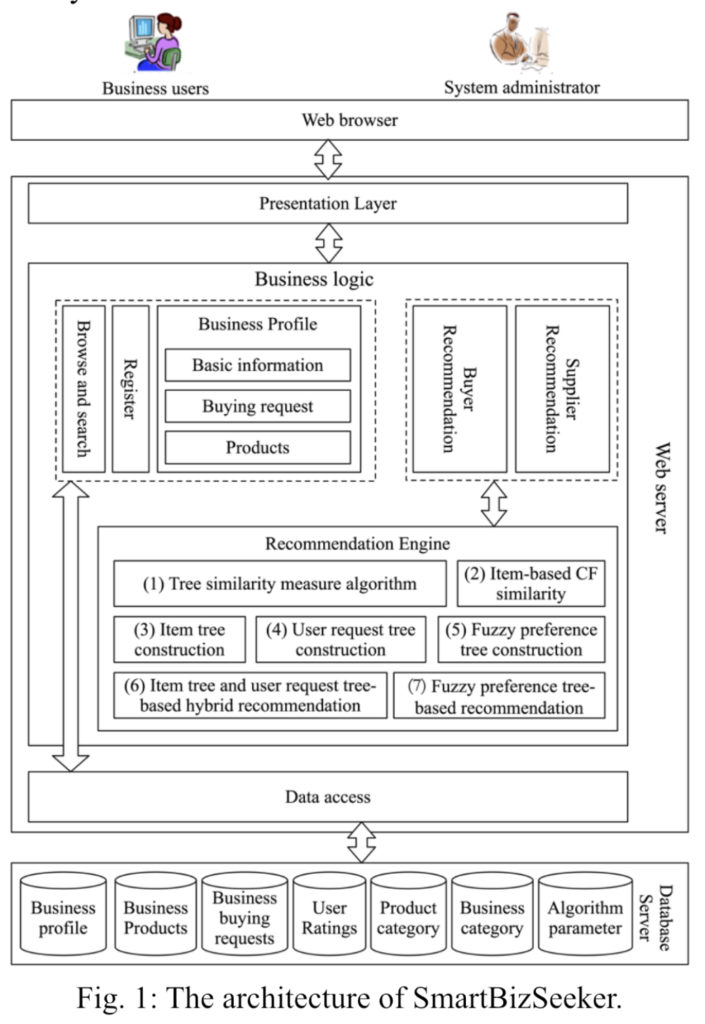 The main components in the recommendation engine are described as follows:
The main components in the recommendation engine are described as follows:
(1) Tree similarity measure algorithm.
This component implements the tree similarity measure computation algorithms. It provides not only the interface to calculate the similarity measure between two tree-structured data, but also the interface to generate the maximum conceptual similarity tree mapping between tree-structured data.
(2) Item-based CF similarity.
This component computes the item-based CF similarity between two items based on the user-item rating matrix, which is used in the item tree and user-request tree-based hybrid recommendation method.
(3) Item tree construction.
The potential suppliers’ product and the potential buyers’ buying request will be constructed as the item trees as shown in Fig. 2 (a).
(4) User-request tree construction.
The business buying request and their product will be constructed as the user-request trees as shown in Fig. 2(b).
(5) Fuzzy preference tree construction.
This component implements the fuzzy preference tree construction algorithm and constructs the fuzzy preference tree for the user. When recommending suppliers, the user’s fuzzy preference tree is constructed by merging the user’s buying request and the product trees of businesses rated by the user. When recommending buyers, the user’s fuzzy preference tree is constructed by merging the user’s product tree and the buying requirement trees of businesses rated by the user.
(6) Item tree and user-request tree-based hybrid recommendation.
This method uses the semantic information of tree-structured items and users with the requirement matching knowledge and takes advantage of the merits of CF-based recommendation methods.
(7) Fuzzy preference tree-based recommendation.
This method takes a user’s fuzzy preference tree and an item tree as input, and calculates the predicted rating.

(a) The item tree structure, and (b) The user-request tree structure
Fig. 2. Tree structures in SmartBizSeeker.
We give an example to illustrate how the SmartBizSeeker works: a wine company called “Laurance Wines Company” would like to find buyer partners and material suppliers by use of the SmartBizSeeker recommender system. After logging onto the system, the company can manage its business profile through the profile management module, as shown in Fig. 3 (a) below.
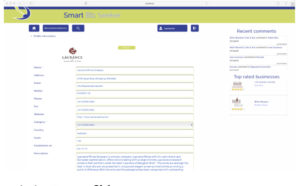 The company produces ciders and red wines, and needs apples, grapes and some other fruits as materials.
The company produces ciders and red wines, and needs apples, grapes and some other fruits as materials.
The product and buying request are in tree-structured data. The products of the company can be entered into the system through the product management page, as shown in Fig. 3 (b).
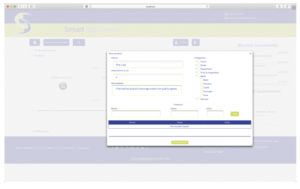 The company can specify its buying requests for particular products or product categories if it is looking for suitable supplier partners, as shown in Fig. 3 (c) below.
The company can specify its buying requests for particular products or product categories if it is looking for suitable supplier partners, as shown in Fig. 3 (c) below.
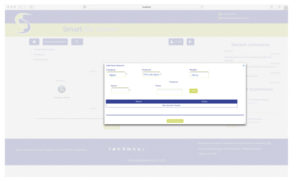
At the same time, the information is also used so that the company can be recommended to other companies, which is very helpful to expand businesses. In the supplier recommendation page, a list of fruit providers is recommended.
At the same time, in the buyer recommendation page, a list of bottle shops and hotels that might want to buy products from this company are recommended to “Laurance Wines Company”, as shown in Fig. 3 (d).
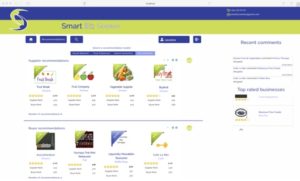
Featured picture: hobbit/Shutterstock
Qian Zhang is Postdoctoral Research Fellow, Faculty of Engineering & Information Technology at University of Technology Sydney and Core Member at the Australian Artificial Intelligence Institute (AAII). Distinguished Professor Jie Lu is Associate Dean Research in the Faculty of Engineering and Information Technology (FEIT) at UTS and Director at AAII.
@AuManufacturing‘s Working smarter with data series is brought to you with the support of Fusion5, the largest 5-Star NetSuite Partner in Australia & New Zealand, providing full-featured cloud business management software solutions.

Subscribe to our free @AuManufacturing newsletter here.
Topics Manufacturing News Technology
@aumanufacturing Sections
Analysis and Commentary Awards Defence Manufacturing News Podcast Technology Videos










